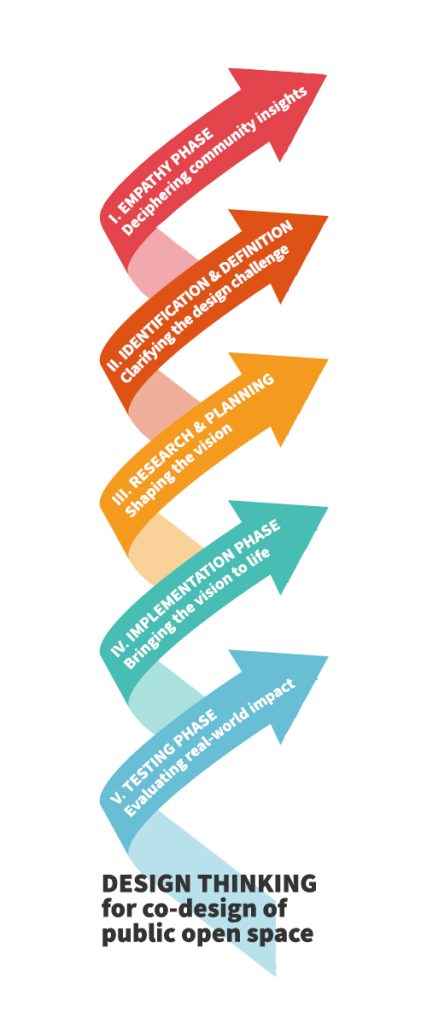Design Thinking for the co-design of public open spaces
A practical guide for the use of the Design Thinking methods for emphasizing human-centered design principles
About
Design Thinking for the co-design of public open spaces
The Design Thinking toolkit is a practical guide that aims to provide a comprehensive approach to help users in the co-design of public open spaces. It is based on the principles of Design Thinking and offers a range of strategic tools and actionable steps aimed at delivering integrated solutions through measures that include identifying stakeholders and understanding the needs of the local community.
The measures are aimed at the development of a holistic approach rooted in Design Thinking, emphasizing human-centered design principles for co-designing public open spaces. This approach advocates for a comprehensive assessment of the needs and aspirations of the local community, involving the provision of a range of unconventional tools and strategies to foster the generation of new ideas and concepts.
The Design Thinking guide leads users through a dynamic process that includes five main phases:
- Empathy phase: Deciphering community insights
- Identification & Definition phase: Clarifying the design challenge
- Research & Planning phase: Shaping the vision for public open spaces
- Implementation phase: Bringing the vision to life
- Testing phase: Evaluating real-world impact
The Design Thinking toolkit also proposes a series of Best Practices showing three outstanding public space projects that embody the essence of Design Thinking. Even if not explicitly labeled under the “Design Thinking” banner, each project is a testament to the core principles that drive this approach: understanding user needs, prototyping potential solutions, and refining them through iterative feedback, resulting in successful and vibrant spaces.
Finally, the toolkit inlcludes a list of supporting material and containing templates to support the various steps (Action Plan Sheets, Empathy Map, Feedback Capture Grid, Idea Brainstormin Sheet, Priority Matrix, Stakeholder Map).
Target group
- Doctoral candidates and young researchers working at the intersection of life sciences, urban well-being, and urban planning,
- Spatial planners, architects, and other professionals specializing in urban planning and revitalization, environmental and urban studies, urban well-being, and community-oriented co-design
- City staff and nonprofit organizations dedicated to enhancing the quality of urban livability within their respective communities.
- Administrations and stakeholders involved in the collective process of planning and analysing the territory
- Small and medium-sized enterprises (SMEs) active locally
Benefits of using the Tool
- Versatile and non-traditional problem-solving methods, which can be applied across a wide range of disciplines and challenges.
- Acquisition of holistic skills to identify and solve human-centered challenges, drive innovation, and adapt to different problem-solving scenarios.
- Enable users to facilitate and optimize co-design processes in close collaboration with local communities and stakeholders: these efforts aim to positively transform the urban environment and improve the quality of urban life.
- Integrated awareness that research and/or (territory planning) project are collective processes.



